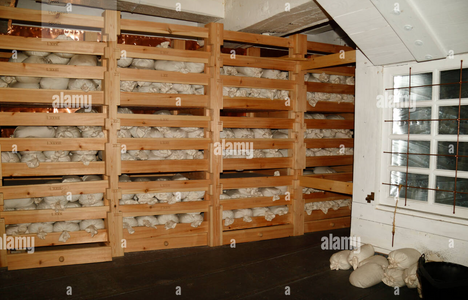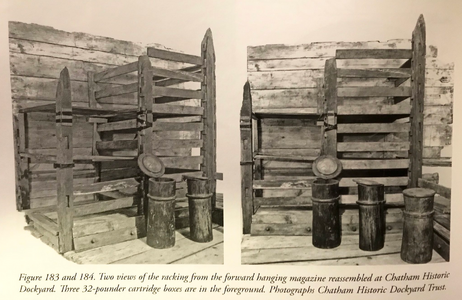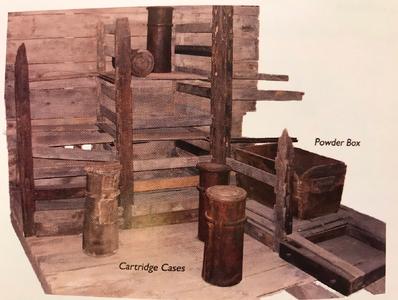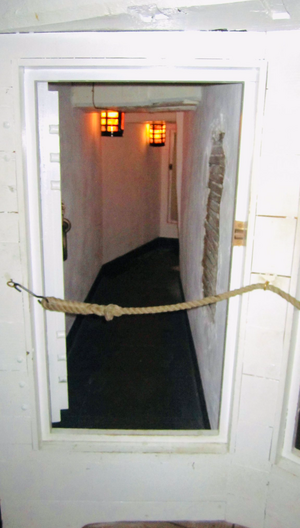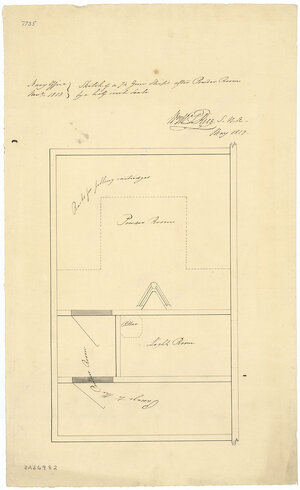On board a warship, gun powder was therefore stored in a magazine located deep inside the ship, away from any source of fire or sparks; it also had to be protected from water, as damp powder can ignite, albeit more severely, and lead to a devastating explosion in the gun. The magazines were specially designed and located next to the filling room where the cartridges were made. No iron tools were allowed near the powder. The powder was stored loosely in wooden barrels tied with copper or wooden hoops, rather than the usual iron barrels. Next to this was a lighting room, a completely separate room in which lanterns were set up to illuminate the magazine and the filling room through glazed windows, for lanterns and candles were the only practical source of artificial light at the time.
In the Royal Navy, this storage magazine is known as the Grand Magazine. With the French and Spanish, it is known as Sainte Barbe or Santa Barbara, in reference to the saint who was beheaded for her Christian faith by her own father, who was then struck dead by lightning. She therefore became the patron saint of all those who work with explosive substances. And that is why there was often a picture of her outside the magazine.
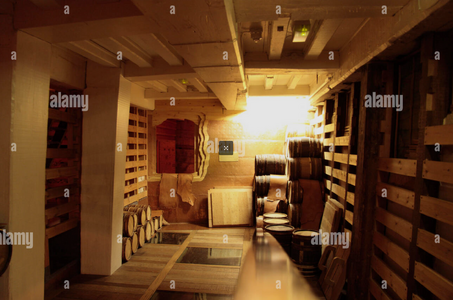
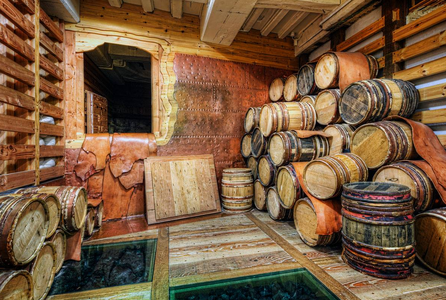
The Grand Magazine is lined with copper, lead and plaster, designed to keep the powder dry, prevent sparks and keep out rats, which could have spread gunpowder throughout the ship. - Grand Magazine of HMS Victory (x)
interesting here also are the leather strips between the baskets - the rings of these baskets were made out of copper (I think)
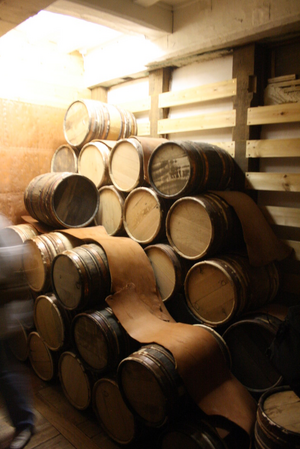
and the filling room was often floored by tin for the same reason
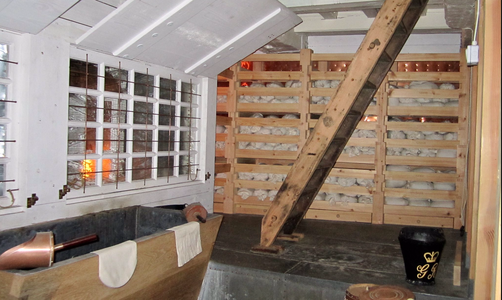
Here you can see also that the filling bassin was sheated, the filling shovel was made out of copper
In the Royal Navy, this storage magazine is known as the Grand Magazine. With the French and Spanish, it is known as Sainte Barbe or Santa Barbara, in reference to the saint who was beheaded for her Christian faith by her own father, who was then struck dead by lightning. She therefore became the patron saint of all those who work with explosive substances. And that is why there was often a picture of her outside the magazine.


The Grand Magazine is lined with copper, lead and plaster, designed to keep the powder dry, prevent sparks and keep out rats, which could have spread gunpowder throughout the ship. - Grand Magazine of HMS Victory (x)
interesting here also are the leather strips between the baskets - the rings of these baskets were made out of copper (I think)

and the filling room was often floored by tin for the same reason

Here you can see also that the filling bassin was sheated, the filling shovel was made out of copper
Last edited:




